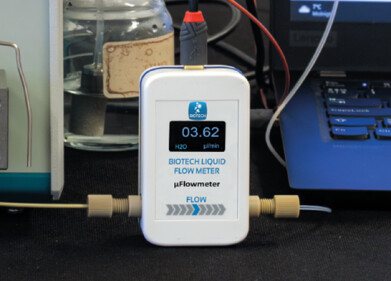HPLC, UHPLC
How Do You Choose the Right Column for Chromatography?
Aug 11 2022
Column choice is a critical aspect for chromatography analysis. But it’s also one of the most difficult areas to advise on – given the breadth of options available. In this post, we’ll advise on some of the most important considerations when choosing a column.
What separation chemistry is it for?
The first question you’ll need to answer is which mode of separation you’ll be using. That includes things like normal-phase, reverse-phase and size-exclusion HPLC. This will determine the type of column you need.
Normal-phase columns contain a polar stationary phase, for instance, while reverse-phase columns are the opposite with a non-polar stationary phase. This in itself depends on the analytes in question, with reverse-phase chromatography better suited for separating organic compounds, as an example.
Column dimensions
The next factor to consider is the dimensions of your columns – more specifically, the length and diameter. These measurements can be manipulated to boost speed, sensitivity and efficiency of your analysis. Doing so can also reduce solvent consumption to cut costs over time.
To give you a general idea, a narrow column will heighten sensitivity, reduce the sample size required and cut solvent consumption. On the other hand, a shorter column will cut analysis time as well as reducing solvent use, though it will also affect resolution.
As a broad example, 300mm columns would be suited to high-resolution separations, while a 150mm column would be better for screening. However, this all has to be balanced with back-pressure – which needs to stay within the system’s pressure capability. A longer, narrower column may require more force than one that’s short and wide.
Particle size
Another variable in column selection is the size of your particles. Beads in a stationary phase are typically up to 10 micrometres in size, though they can be as small as 2 micrometres. Using smaller beads leads to improved resolution and efficiency.
However, as above, this needs to be balanced with back-pressure. Your machine can become overwhelmed if it’s pumping a mobile phase through a dense column with smaller beads.
It’s also worth considering the pore size. This is another factor that can be manipulated to control retention, and hence impacts your choice of column. Particles with a smaller pore size have a larger surface area, increasing retention time. Small molecules typically require pore diameters of 8-12 nanometres, while larger analytes can work best with a pore size of up to 30 nanometres.
Find out more about column selection
For a more detailed discussion of column selection, check out the article, ‘µ-Pillar Array Column – an Innovative Approach for the Separation and Characterisation of Complex Biological Samples’, which discusses the development of µ-pillar array columns to tackle many of the issues faced by traditional packed-bed columns.
Digital Edition
Chromatography Today - Buyers' Guide 2022
October 2023
In This Edition Modern & Practical Applications - Accelerating ADC Development with Mass Spectrometry - Implementing High-Resolution Ion Mobility into Peptide Mapping Workflows Chromatogr...
View all digital editions
Events
ACS National Meeting - Fall 2024
Aug 18 2024 Denver, CO, USA
Sep 04 2024 Chiba, Tokyo, Japan
Sep 04 2024 University of Warwick, Coventry, UK
Sep 10 2024 Rockville, MD, USA
Plastics Recycling World Expo Europe
Sep 11 2024 Brussels, Belgium














